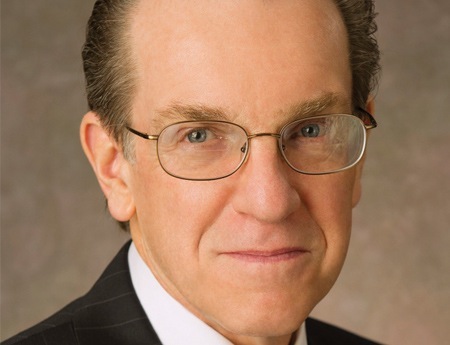CBS Says TV Provides Muscle in Ad Campaigns

The TV industry, calling on research to hold onto ad dollars now shifting to digital, hauled out new evidence pointing to the marketing muscle of mass media.
David Poltrack, CBS’ research wizard, presented research showing that even as more marketers build multimedia campaigns, TV is doing the bulk of the work. While digital may be a powerful supplement to TV, Poltrack told an Advertising Research Federation conference in New York Monday, it is not a replacement. And marketers that use TV dollars to fund digital advertising are finding that digital doesn’t provide as much return on investment as TV and are coming back to TV, particularly broadcast.
“Digital challenged television. Television is now standing up to the challenge and saying, ‘OK we’re going to prove just how effective we are,’ and that’s what you’re seeing emerge over the last month or so as we prepare for the upfront,” Poltrack told B&C.
Poltrack’s address followed one by Coca-Cola, Starcom MediaVest Group and Nielsen Catalina that demonstrated a better way to define target audiences and reach them more efficiently using television.
Poltrack said that CBS’ presentation was designed to show advertisers how to hit that target once it’s been defined. “Advertisers are experimenting with digital. That they are to a certain extent getting the funding to do so from television, is a fact,” Poltrack conceded. But evidence is emerging that’s not a good marketing strategy.
CBS says it looked at 315 brands across a variety of product and service categories using Nielsen data and found that the ad campaigns for these brands reached 67% of their target audiences and that 53% of those people saw only TV ads, while 5% saw only digital ads and 9% saw both TV and digital ads. Poltrack said the findings were similar whether the advertiser spent 10% of their media budget on digital or 20% on digital or 25% on digital.
The bottom line is that advertisers who take dollars away from TV to fund digital media are giving up exposure to their target audiences and ultimately sacrificing potential sales, Poltrack said.
The smarter way to stay on top of broadcasting and cable industry. Sign up below
The CBS research comes a week after Turner Broadcasting and Horizon Media identified TV as the most effective media for most marketers.
“Nothing in this suggests that there’s going to be a mass migration out of television in to digital. The returns are not showing up yet,” Poltrack said. “A lot of these big companies have made a big deal about their movement to digital are backing off.”
While advertisers are trying to be efficient and eliminate waste, Poltrack says they still need to base campaigns in mass media to make sure their message reaches the maximum number of potential customers. For example, while digital can do a good job of identifying dog owners and delivering ads only to those people, a marketer would be missing the millions of Americans thinking about buying a dog, and those who bought a dog recently.
“The game is to reach as many potential targets as possible. In the case of the Starcom demonstration, what they show is how you can significantly improve the amount of people you reach and get better efficiency. But you still have to reach 100% of the people,” Poltrack said. Instead of pocketing the savings from being more efficient, “our argument would be if you can make your investments in television more productive, and generate even greater returns from each dollar spent, then that would motivate you to spend more,” he said.
Poltrack added that many consumer product goods advertisers have been trying to save money by buying less primetime and moving to less-expensive lower-rated dayparts. “They’re buying high volumes of low rated spots and they’re not using the medium to its full effectiveness. Then they do the return on investment, they conclude that television must not be working any more,” Poltrack said. “And it’s not the television that isn’t working. It’s they’re not using the most effective part of television. They’re not maximizing what television brings which is high reach."
“You can make your investment in television more productive, and generate even greater returns from each dollars spent,” he said. “We believe the net result of this will be to make television even more effective, document the effectiveness, and allow people to use it more effectively and that will increase the investment in television, not reduce it.”
Jon has been business editor of Broadcasting+Cable since 2010. He focuses on revenue-generating activities, including advertising and distribution, as well as executive intrigue and merger and acquisition activity. Just about any story is fair game, if a dollar sign can make its way into the article. Before B+C, Jon covered the industry for TVWeek, Cable World, Electronic Media, Advertising Age and The New York Post. A native New Yorker, Jon is hiding in plain sight in the suburbs of Chicago.

